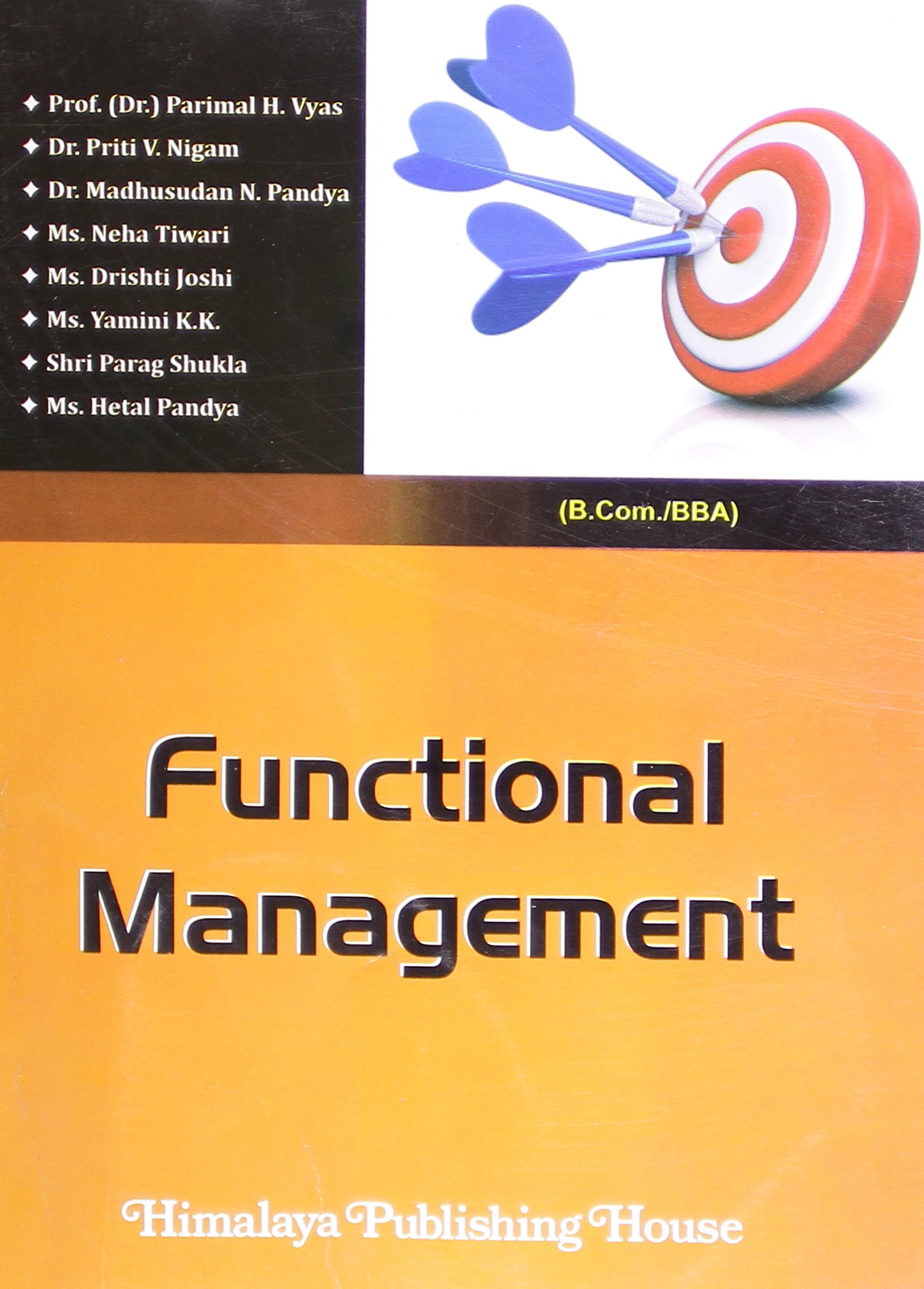Functional Management
no information available
Part-I has included six chapters (chapter number one to six) and deals with topics such as. viz., Personnel Management, Human Resource Management and Human Resource Development. Human beings are important resources to an organisation. Like other resources, they represent an investment whose development and utilisation require managing (i.e. planning, organisation, leadership and evaluation). In every organisation, human resources are a pivotal variable without which the assets are worthless. Therefore, human resources need to be understood and utilised effectively to achieve the goals of an organisation. The discipline of personnel management has gained importance since professionalisation of management and is now regarded as a `must` for the successful running as a business. Part-II has offered detailed discussion on (chapter number seven to thirteen) concerning `marketing as a business function that identities customer needs and wants, determines which target markets the organization can serve best, and designs appropriate products, services, and programmes to serve these markets. The goal of marketing is to create customer satisfaction profitably by building Value-laden relationships with important customers. The marketing department cannot accomplish this goal by itself. It must team up closely with other departments in the company and partner with other organizations throughout its entire value-delivery system to provide superior value to customers. Thus, marketing calls upon everyone in the organization to 'think customer' and to do all they can to help create and deliver superior customer value and satisfaction. Discussion on marketing is followed by important areas` of Marketing Research, Channels of Distribution and Advertising. It also includes discussion on Production and Material Management. Part-III has covered in one chapter (chapter number fourteen) the topics on the Portfolio Management and Stock Exchanges which takes into consideration emerging requirement of present scenario of business. Part-IV has dealt with (chapter number fifteen to sixteen) Office Management, Management of Information System. Part-V has focused upon (chapter number seventeen and eighteen) coverage of topics such as Banking and Negotiable Instruments. Part-VI includes two chapters (chapter number nineteen and twenty) covering Basics of Insurance and Transportation, and ISO 9000. Each chapter ends with a case study, giving a practical mental, exercise to the students. Extensive use of illustrations, cases, objective questions and descriptive questions make the book straightforward, easy to read, and enjoyable. In this changed environment, new concepts of managements are being introduced. Contents : Part-I: Personnel Management Chapter 1 Personnel Management Chapter 2 Recruitment and Selection Chapter 3 Training and Development Chapter 4 Performance Appraisal Chapter 5 Wage and Salary Administration Chapter 6 Trade Union Part-II: Marketing and Production Management Chapter 7 Marketing Chapter 8 Product Positioning and Life Cycle Chapter 9 Consumer Behaviour Chapter 10 Channels of Distribution Chapter 11 Advertising Chapter 12 Marketing Research Chapter 13 Production Management Part-III: Portfolio Management Chapter 14 The Portfolio Management and Stock Exchanges Part-IV: Office Management Chapter 15 Office Management Chapter 16 Management Information System Part-V: Banking and Negotiable Instrument Chapter 17 Banking Chapter 18 Negotiable Instruments Part-VI: Insurance and ISO 9000 Chapter 19 Insurance and Transportation Chapter 20 ISO 9000 Further Readings References Glossary ... Read more Read less











